CHARSADDA, Pakistan — A third of the country underwater. More than 1,000 people killed. And an estimated $10 billion of damage done.
Pakistan's “monster monsoon” has swept away lives, homes, crops and bridges as weeks of historic rains fuel deadly flash floods. Almost half a million people have been displaced, with vast areas cut off from supplies and power.
Footage shared with NBC News shows torrents sweeping away multistoried buildings and inundating people up to their necks.
Experts and local officials have drawn a direct line to human-made climate change, saying it illustrates how countries with the lowest contributions to the global crisis are becoming increasingly vulnerable to its effects — and in dire need of urgent aid.
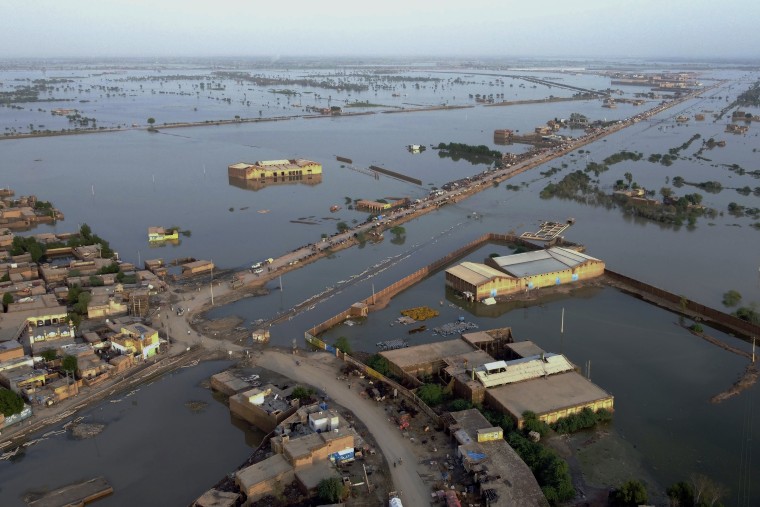
On Tuesday, the United Nations issued a flash appeal for emergency funds, urging the world to give the South Asian nation its attention and aid.
“It was not less than a doomsday for us," said Asghar Ali, a 56-year-old farmer who was forced to leave his home in the northern town of Charsadda on Friday.
"Thousands of people just didn’t have time to shift precious households to safe places,” said Ali, who now lives with his livestock in a makeshift shelter alongside the Islamabad-Peshawar motorway.
“We saved our lives but the houses filled with floodwater. Life here on the motorway is a curse,” he added.
Pakistan’s government has said that more than 33 million people, around 15 % of the population, have been affected by the extreme weather.
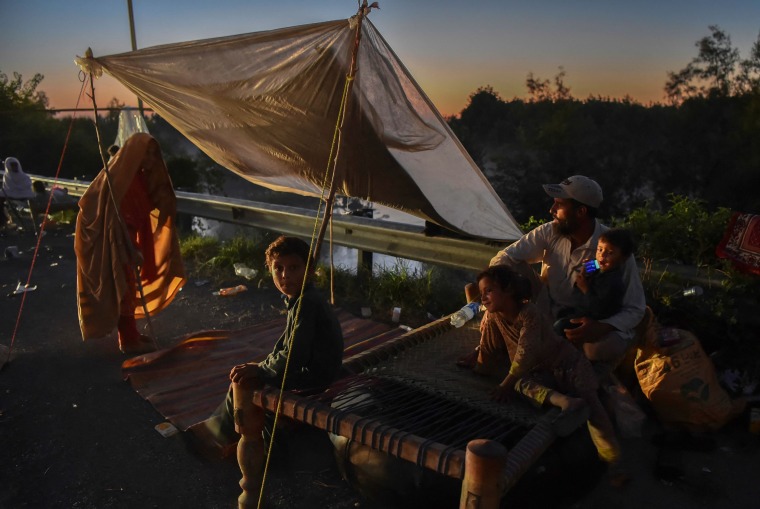
The extreme floods have killed more than 1,136 people since June, including 386 children, and damaged a million homes, Pakistan's government said.
Although rains stopped three days ago and floodwaters in some areas were receding, large areas remain submerged and the country's main rivers, the Indus and the Swat, are still swollen.
The heavy floods have left a third of the country — an area the size of Wyoming — underwater, according to Climate Minister Sherry Rehman. She has called this "the monster monsoon of the decade" and described the situation as a “climate-induced humanitarian disaster of epic proportions.”
Authorities backed by the military, rescuers and volunteers have been battling the aftermath, but local officials and aid groups say the scale of the crisis means Pakistan cannot cope on its own.
The government declared a state of emergency and on Tuesday, the U.N. launched an appeal for $160 million in emergency funds for the country.
“Pakistan is awash in suffering,” U.N. Secretary-General Antonio Guterres said in a video message. “The Pakistani people are facing a monsoon on steroids — the relentless impact of epochal levels of rain and flooding.”
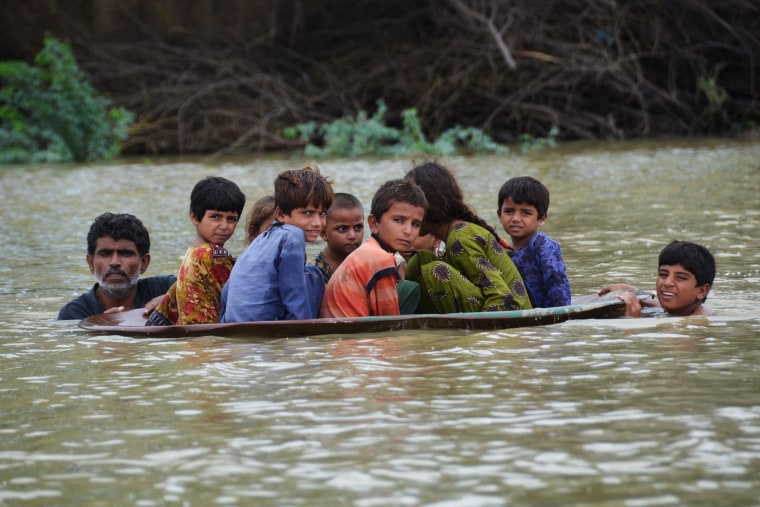
The country’s south, southwest and north have been hit hardest by the floods.
The waters have also destroyed roads and bridges, further complicating relief efforts, the chief minister of the southern Balochistan province, Mir Abdul Qudoos Bizenjo, told a news conference Monday.
“Life has become terrible here,” said Riaz Khan, a resident of Kalam Valley in Pakistan’s picturesque northern Swat district. "We have been cut off from the rest of Pakistan since Aug. 25 as the floods had swept away roads and bridges linking us with the downtowns," he added.
He said the floods had left the valley's entire population of 40,000 without power supply.
Aid groups are also calling for immediate assistance.
“We’re seeing complete devastation," Khuram Gondal, Save the Children’s Pakistan director, said in a statement Monday. "It is clear that this is a massive humanitarian and climate emergency. Children are always the worst affected."
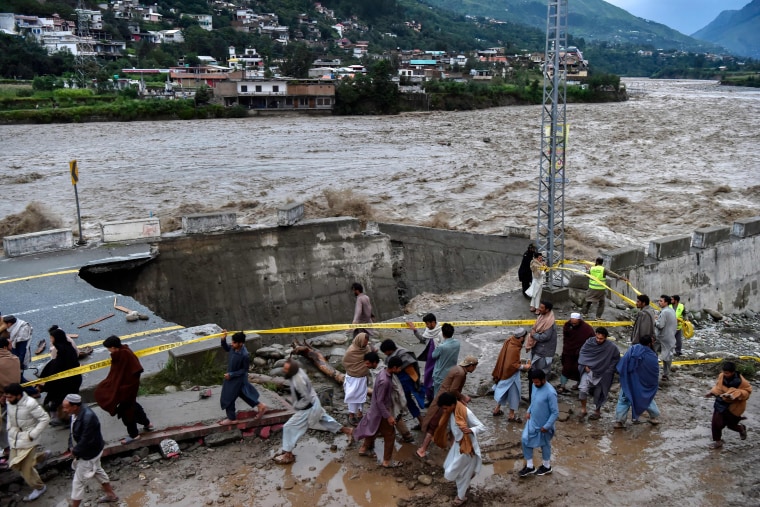
The floods are also a financial catastrophe, sweeping away crops, livelihoods and crucial infrastructure.
The country has already suffered losses equaling $10 billion due to the flooding, Finance Minister Miftah Ismail told reporters Monday. Around 90% of cotton crops have been destroyed in the Sindh province, according to its chief minister.
“As compared to the 2010 devastating floods, this time casualties are less but the economic losses are much more” said Mahmood Khan, the chief minister of Pakistan’s Khyber Pakhtunkhwa province. More than 1,700 people died in severe flooding in Pakistan in 2010.
“Most of the roads and bridges in the hilly areas of the Malakand region had been washed away in the floods, causing billion rupees of losses.”
The International Monetary Fund's executive board on Monday agreed to release around $1.1 billion to Pakistan in the seventh installment of a bailout program to avoid default.
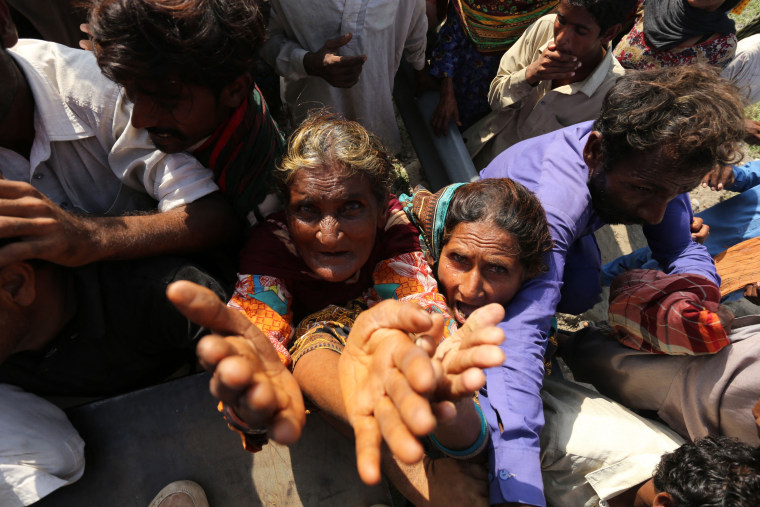
The flooding has prompted warnings from activists that the effects of climate change are being disproportionately felt by countries that have done little to contribute to it.
Fahad Saeed, an Islamabad-based analyst for Climate Analytics, said the group's analysis showed the recent heat wave that saw temperatures soar past 122 degrees Fahrenheit was made 30 times more likely due to climate change.
Weather experts say higher temperatures directly lead to heavier rainfall as warmer air has a greater capacity to hold water, a phenomenon seen around the world in recent weeks.
Saeed described Pakistan's flooding as the "worst in the country's history" in terms of people affected, warning it may worsen as the current monsoon season is still not over.
The “unprecedented” heat wave that hit Pakistan this year has also accelerated the melting of glaciers in mountain ranges near northern Pakistan, Mohsin Hafeez, Pakistan representative at the International Water Management Institute, said in an emailed statement Tuesday.
This threatens further floods as that water could join the rain that has come crashing down from the northern mountains.
“People here are bearing the brunt of global climate change," Islamic Relief Worldwide CEO Waseem Ahmad said in an emailed statement Tuesday. "Pakistan produces less than 1% of the world’s carbon footprint, but its people are suffering the biggest consequences."
CORRECTION (Aug. 30, 2022, 10:16 a.m. ET): A previous version of this article misstated the weather event made 30 times more likely due to climate change. It was Pakistan’s recent heat wave, not its current flooding.
Mushtaq Yusufzai reported from Charsadda, Pakistan, Rhoda Kwan reported from Taipei, Taiwan, and Evan Bush reported from Seattle.